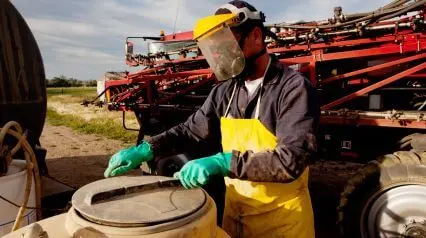What is Natural Gas?
Natural gas is a type of fossil fuel that comes from organic matter deep in the Earth’s surface. The remains of plant and animal life from millions of years ago form these gases underground, where the intense heat and pressure transform them into fossil fuel. As the world looks to shift toward a cleaner future and find better energy sources, the demand for natural gas has skyrocketed because it is abundant, low-cost, and has a relatively light environmental impact.
Natural gas burns much cleaner than other fossil fuels like crude oil and petroleum products. It also produces significantly fewer greenhouse gases for every unit of energy produced. And since the Earth is abundant with natural gas, many people are looking at this natural resource as the future of energy.
Benefits of Natural Gas
There are many benefits to natural gas, which is why many industries and governments are paying close attention to it. This is a very versatile fuel source that emits less pollution than other fossil fuels and is also much more abundant. Here are some other key benefits of using natural gas:
-
Clean Burning
Natural gas burns much cleaner than other fossil fuels, such as petroleum. This makes it a much more efficient energy source for heating and generating power.
-
Abundance
There are massive reserves of natural gas worldwide, making it the most abundant fossil fuel available. While it isn’t a source of renewable energy, we currently have huge reserves of it, making it a better option than other depleting fossil fuels.
-
Versatility
There are many ways to use natural gas. Currently, this fuel is used for power generation, heating, cooking, and transportation.
-
Lower Greenhouse Emissions
A major concern when using fossil fuels is the massive amounts of greenhouse gas (GHG) emissions that come from burning them. However, natural gas produces much lower GHG emissions, which is why it’s a very promising energy source.
-
Stability
Unlike other fuel sources, natural gas isn’t subject to volatile market prices, so it’s much more reliable.
Transform the Way You Produce and Use Natural Gas with SafetyCulture
Eliminate manual tasks and streamline your operations.
Get started for FREEEnvironmental Impacts of Natural Gas
While natural gas offers many benefits and looks like a great energy source for the future, there are some major concerns about its environmental impact. Remember, natural gas is non-renewable, and even if it produces much fewer emissions than other fossil fuels, it isn’t a 100% clean fuel.
Natural gas is mostly made of methane which is much more potent than carbon. This poses a major risk as this gas can leak out and pollute the air during transportation, production, and processing. So, it’s very important for industries to figure out a solution for these potential emissions before fully adopting natural gas as an energy source.
Additionally, natural gas can also pollute the water. During extraction, many industries use fracking to extract natural gas from the ground. While this releases a lot of natural gas from the rocks, it requires the injection of water, sand, and other chemicals deep into the ground, which contaminates water sources.
This is why natural gas is largely seen as a fuel source that we can use while transitioning to renewable energy. But further down the line, it would be best for us to completely stop using fossil fuels and switch to renewable energy sources like solar, wind, and hydroelectric.
How It’s Produced
Natural gas is trapped deep underground. To access the natural gas, teams drill into the ground to release the gases and capture them. From there, the gases are transported to processing plants through pipelines. At the processing plant, different processes are used to remove water, sand, dirt, and any other impurities from the natural gas.
After the processing, the natural gas can be stored in tanks and used for heating and power generation.
That said, one of the most common extraction methods for natural gas is fracking. This involves injecting water and other compounds deep into the ground to break apart rock formations and release the gas trapped inside. This can contaminate water sources and have a major impact on the environment. This is also why fracking isn’t the recommended extraction method for natural gas.
There have been recent developments in the world of “green fracking,” which promises to be a less harmful alternative to traditional fracking. However, further research is required before we can adopt green fracking processes throughout the industry.
Natural Gas vs. Other Energy Sources
To understand whether or not natural gas is the right energy source for the future, it’s best to compare it with other common fuel sources. Here’s how natural gas stacks up when compared to coal, oil, and renewable energy sources.
Natural Gas vs. Oil
Natural gas, while still a fossil fuel, burns much cleaner and more efficiently than petroleum, which is the most common fossil fuel we use for power generation right now. It also generates significantly fewer carbon emissions than oil for every unit of energy produced.
Natural Gas vs. Coal
Just like with oil, natural gas produces far fewer carbon emissions for every unit of energy it produces compared to coal.
Natural Gas vs. Renewable Energy Sources
When it comes to environmental impact, nothing can beat renewable energy sources. Renewable energy sources produce zero carbon emissions and are much better in the long term. However, the technology behind renewable energy needs to develop a bit more before it can fully take over fossil fuels.
FAQs about Natural Gas
The most common natural gases are the first four alkanes. These include butane, propane, ethane, and methane. While these gases have different molecular compositions and uses, they are all flammable, odorless, and colorless.
No, Liquefied Petroleum Gas (LPG) is not a type of natural gas. Instead, this gas is produced during natural gas and crude oil refining processes. Aside from differences in their compositions, they also vary in availability, as LPG is far more abundant compared to natural gas.
Natural gas is a very versatile fuel that can be used for various purposes, including:
heating;
cooking;
power generation; and
transportation.
While natural gas burns cleaner than other fossil fuels, it still has a negative environmental impact. And one of the ways to reduce the impact is by adopting cleaner and greener extraction processes while also phasing out fracking.




